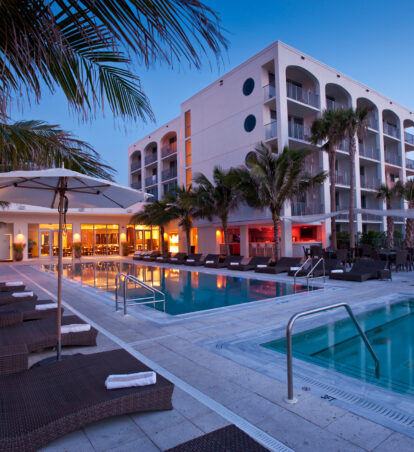Which Ad Preformed Best? Can you Guess?
Facebook ads are a powerful tool for businesses to reach their target audience through personalized and engaging content, but selecting the perfect elements for an ad is like finding the missing puzzle piece to campaign success.
Take a look at these Facebook ad variations and see if you can guess which one outperformed the others? Discover more here.
[E-Book]Promoting DEI in the Workplace
Diversity, Equity, and Inclusion (DEI) covers a variety of topics and tactics related to the fair treatment of all people. In the workplace, this means creating a space where all employees feel safe and welcome.
More and more businesses are starting to implement DEI programs, but there’s no real standard, given the broadness of the topic. Some programs are designed to support underrepresented social groups, some to compile employee resources, and others to signify a progressive company culture. Because of this variation, it can be hard to decide which strategies will work best for your business.
Learn our tips and strategy for promoting DEI in the workplace, in our full E-Book, here.
WordPress vs Webflow: The Ultimate Showdown
In the dynamic world of website development, understanding the differences and benefits of each website platform is crucial for the success of your online presence. Two popular options that often come into consideration are WordPress and Webflow. Each has its strengths and unique features, making the decision a matter of aligning your specific needs with the capabilities of the platform. Let's dive into a comparison of the two platforms to help you make your own conclusions.
Ease of Use:
- WordPress: Known for its user-friendly interface, WordPress is widely embraced for its simplicity. With a vast library of plugins and themes, customization is accessible even for beginners.
- Webflow: Offering a visual design interface, Webflow empowers users to create visually stunning websites without coding. The learning curve is moderate,
Design Capabilities:
- WordPress: Good for design, but customization may require coding skills. Thousands of themes and plugins are available.making it suitable for those who want more control over design elements.
- Webflow: Excellent for design-centric websites. Offers advanced styling options, animations, and responsive design without coding.
Flexibility and Customization:
- WordPress: Renowned for its flexibility, WordPress allows extensive customization through plugins and themes. Developers can dive into the code for advanced modifications, offering unparalleled flexibility.
- Webflow: With a focus on design, Webflow provides creative freedom in a visual environment. It's excellent for those who prioritize a design-centric approach, but customization might have some limitations compared to WordPress.
SEO Capabilities:
- WordPress: With a plethora of SEO plugins and a strong foundation for content optimization, WordPress has a reputation for being search engine-friendly. It's a preferred choice for those prioritizing SEO.
- Webflow: While Webflow offers SEO features, it may not be as robust as WordPress in this aspect. However, it provides sufficient tools for basic optimization.
Hosting and Maintenance:
- WordPress: As a self-hosted platform, WordPress requires users to manage their hosting. While this grants more control, it also means handling regular updates and security measures.
- Webflow: All-in-one hosting is a standout feature of Webflow. Users can enjoy hassle-free hosting, automatic updates, and security measures, making it a convenient choice for those who prefer a hands-off approach.
Cost Considerations:
- WordPress: The core software is free, but expenses can accrue with premium themes, plugins, and hosting. It offers flexibility in budgeting based on individual needs.
- Webflow: Pricing is based on usage, and while it might be costlier than some WordPress options, the all-inclusive package simplifies budgeting without the need for additional plugins or hosting.
Page Creation (after launch):
- WordPress: WordPress is renowned for its user-friendly CMS, providing clients with the ability to create new pages seamlessly. Clients can navigate the intuitive dashboard, access the page editor, and use a straightforward block-based system to compose content. With its extensive library of plugins and themes, WordPress empowers clients to customize pages, add media, and manage their sites efficiently. The flexibility of WordPress makes it a popular choice for content-centric websites, including blogs, where clients can easily create and publish new blog posts, landing pages, or any other content-driven pages.
- Webflow: Webflow, on the other hand, takes a slightly different approach. While Webflow is celebrated for its powerful design capabilities, it limits the creation of new pages directly within the editor mode. Unlike WordPress, where clients can add new pages on the fly, Webflow requires a more structured process. Clients typically need to work with designated templates and predefined structures, creating new pages in the Webflow Designer rather than directly within the CMS editor. This can be seen as a potential limitation for clients who prefer a more spontaneous, on-the-go approach to content creation.
E-commerce Integration:
- WordPress: Has robust e-commerce capabilities with WooCommerce plugin, suitable for hotels with extensive online booking requirements.
- Webflow: Is suitable for smaller e-commerce needs. Provides a native e-commerce solution.
Webflow excels in design-centric projects, while WordPress offers extensive customization and e-commerce capabilities, making it suitable for larger establishments with complex requirements. WordPress is a robust, flexible, and well-established platform suitable for various needs.
On the other hand, Webflow caters to those who prioritize design and seek an all-in-one solution. Consider your specific requirements, technical expertise, and long-term goals to make an informed decision. Whether you opt for the familiarity of WordPress or the design-centric approach of Webflow, both platforms offer opportunities to create a powerful and visually appealing online presence.
Need help analyzing the pros and cons of your next website? Let the website design experts at GCommerce help! Learn more about our Webflow Hotel Web Design Services.
5 Reasons to Reevaluate Your Metasearch Marketing
OTAs are gaining share, which means less profitable business, missed opportunities to connect with your guests, and losing out on valuable 1st party data. What can you do? Start by looking at your marketing channels that drive the most direct bookings. 📈 Metasearch is #1 and is the primary battleground to win back share from the OTAs. 🏨
Start taking back your direct bookings with our playbook - 5 Reasons to Reevaluate Your Metasearch Marketing Strategies. 💥
[E-Book] 2024 Digital Marketing Trends and Predictions
From AI, to new social media platforms, to continued privacy regulations and a push for 1st party data, we continue to see a rapid rate of change in the digital space. 🌐✨
The future of digital marketing is here, and we can't wait to share our exclusive insights and predictions for 2024. Get the full scoop here. 📚🔍



